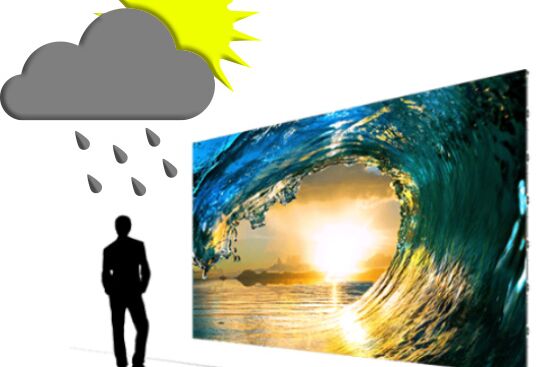Effective Tactics for Addressing Temperature Challenges in LED Display Panels
Wiki Article
LED wall panels are progressively popular for various applications, including promotion, functions, and electronic displays. However, overheating is a major issue that can affect their functionality and lifespan. When LED panels become too hot, they may dim, hue shift, or even malfunction entirely. Understanding the reasons and applying effective strategies to manage heat can assist preserve the ideal function of LED wall panels. This article will explore several strategies to address excess heat issues related with these devices.
One effective strategy for preventing overheating in LED wall screens is guaranteeing proper airflow. It is essential to place these screens in settings where air circulation is sufficient. This can be accomplished by positioning the screens in a properly aired space or using fans to enhance airflow around the units. Additionally, if the panels are installed in a tight space, creating gaps or implementing air ducts can help release heat more efficiently. Keeping a cooler ambient heat level is vital, as it immediately affects the function and lifespan of LED wall panels.
Another way to combat overheating is through the use of heat control materials. These materials can help absorb, disperse, or deflect heat away from the LED components. Thermal sinks are frequently employed in many digital devices, including LED panels. These metal elements pull heat away from the light-emitting diodes, permitting them to function at a safer temperature. Additionally, heat-conducting paste or pads can be utilized to improve heat transfer between the LED chips and the thermal sinks, further enhancing their chilling effectiveness.

Routine maintenance and monitoring of LED wall panels also play a vital part in stopping excess heat. Dirt and grime can build up on the click this link now faces of these screens, blocking airflow and holding heat. Consistent tidying, using suitable tools, will ensure the screens free from blockages. Furthermore, monitoring the temperature of the screens can help detect excess heat problems before they become critical. Using temperature sensors can provide valuable data, enabling users to take remedial action if the panels begin to exceed safe operating heat levels.
The use of cutting-edge techniques can also help tackle overheating challenges in LED wall panels. Many modern LED panels come equipped with built-in thermal management systems. These systems can automatically adjust the brightness of the display based on the temperature, reducing heat generation when necessary. Additionally, software solutions can monitor the functionality of the screens and provide notifications if excess heat is identified. Using these tools can considerably improve the durability and dependability of LED panel screens.
In conclusion, controlling excess heat in LED panel screens is essential for guaranteeing their performance and durability. Applying methods such as providing adequate ventilation, using thermal management materials, performing routine care, and employing cutting-edge technology can help mitigate overheating challenges. By implementing these preventive measures, users can benefit from the complete advantages of LED panel panels while minimizing the threat of temperature-related issues. This approach not only improves the functionality of the screens but also contributes to a more sustainable and efficient use of technology in various applications.